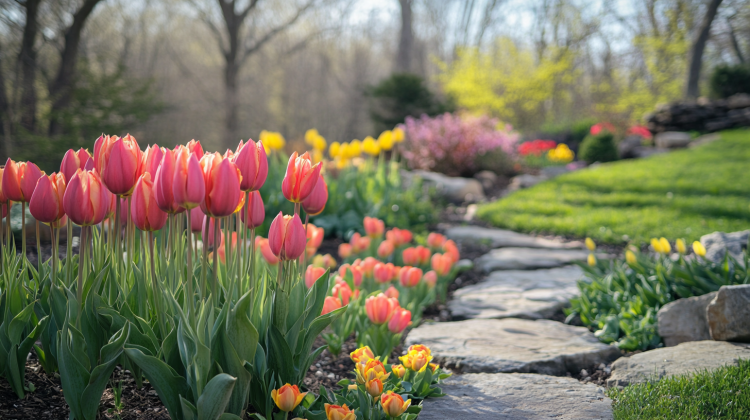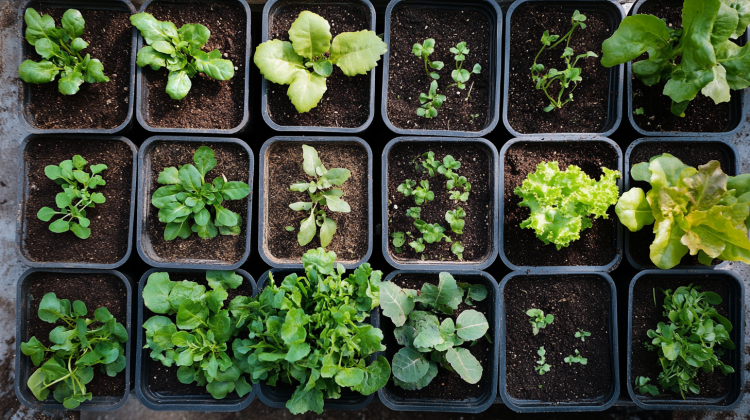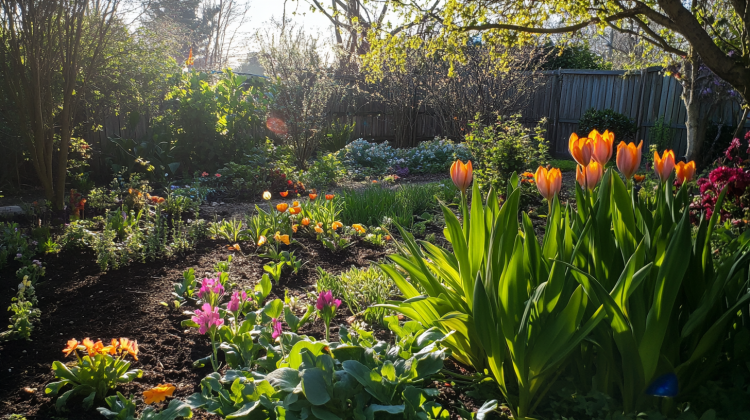

When the chill of winter fades and the promise of warmer days approaches, spring gardening prep becomes essential to ensure a successful planting season. Preparing your garden ahead of time not only saves you effort later but also gives your plants the best start for healthy growth. Whether you’re a seasoned gardener or a beginner, this guide will walk you through the steps to get your garden ready for spring planting.
1. Assess Your Garden’s Condition
Inspect the Soil
Winter weather can leave your soil compacted and nutrient-depleted. Start by assessing your soil’s condition:
- Test Soil pH and Nutrients: Use a soil test kit to measure pH levels and nutrient content. Most plants thrive in slightly acidic to neutral soil (pH 6.0–7.0).
- Add Organic Matter: Enrich your soil by mixing in compost, aged manure, or organic mulch to replenish nutrients and improve structure.
Clean Up Debris
Clear out any fallen leaves, dead plants, or leftover debris from the winter months. This reduces the risk of pests and diseases and provides a clean slate for planting.
2. Plan Your Garden Layout
Choose What to Plant
Decide which vegetables, flowers, or herbs you want to grow. Research plants suited to your climate and hardiness zone to ensure they thrive in your garden.
Rotate Crops
If you grow vegetables, practice crop rotation by changing where you plant specific crops each year. This prevents soil nutrient depletion and reduces the risk of pests or diseases associated with monoculture.
Sketch a Layout
Plan your garden’s layout to optimize space and sunlight. Group plants with similar water and light requirements together, and leave room for pathways to make maintenance easier.
3. Prepare Your Tools and Supplies
Inspect and Clean Tools
Check your gardening tools for rust, dull blades, or damage. Clean and sharpen tools like pruners, trowels, and shovels to ensure they’re in top condition. Replace or repair broken equipment as needed.
Stock Up on Supplies
Inventory your gardening supplies, such as seeds, seed trays, fertilizer, and plant supports. Purchase what you need in advance to avoid last-minute trips during peak planting season.


4. Start Seeds Indoors
For plants that require a longer growing season, such as tomatoes, peppers, or certain flowers, start seeds indoors 6–8 weeks before the last frost date. Use seed trays or pots filled with seed-starting mix, and place them in a warm, sunny location or under grow lights. Once the seedlings develop strong roots and a few sets of true leaves, they’ll be ready to transplant into your garden.
5. Prune and Divide Perennials
Late winter to early spring is the perfect time to prune dormant plants and divide overgrown perennials.
- Prune Dead or Damaged Branches: Trim back dead wood, diseased branches, or overgrown shrubs to encourage healthy new growth.
- Divide Perennials: Dig up and split crowded plants like hostas, daylilies, or ornamental grasses. Replant the divisions to fill empty spots or share them with friends.
6. Mulch and Weed Early
Apply a layer of mulch to suppress weeds, regulate soil temperature, and retain moisture. Spread 2–3 inches of organic mulch, like wood chips or straw, around your garden beds. Additionally, tackle weeds early before they have a chance to take root and compete with your plants.
7. Prepare Irrigation Systems
Test your irrigation systems or hoses to ensure they’re functioning properly. Clean and repair any clogged or leaky drip lines, sprinklers, or soaker hoses. If you rely on rain barrels, clean them out and set them up for the spring rains. Having an efficient watering system in place will save time and effort later in the season.
8. Attract Pollinators
Pollinators like bees and butterflies play a crucial role in the success of your garden. Create a welcoming environment for them by planting early-blooming flowers like crocus, daffodils, or pansies. Avoid pesticides, and consider adding a water source or habitat features like bee houses to encourage their presence.
Pollinators are essential for the health and productivity of your garden, as they help fertilize plants by transferring pollen from flower to flower. To make your garden a welcoming space for them, consider planting a mix of native flowers that bloom in succession throughout the season. Early-blooming flowers like crocuses and daffodils will provide nectar during the start of spring, while lavender, zinnias, and sunflowers will sustain pollinators well into the summer.
Adding habitat features can also encourage pollinators to visit and stay in your garden. For bees, include a bee hotel made of hollow reeds or small drilled wood blocks, where they can nest safely. Butterflies will appreciate sunny, sheltered spots where they can rest and warm their wings. To support hummingbirds, hang feeders with a simple sugar-water solution, ensuring to clean them regularly to prevent mold or bacteria.
Avoiding chemical pesticides is one of the most important steps in creating a pollinator-friendly garden. Instead, use organic or natural pest control methods, like introducing beneficial insects such as ladybugs or planting companion plants to deter pests. By providing a safe environment with ample food and shelter, your garden will thrive with the activity and benefits of these vital creatures.


9. Create a Gardening Calendar
Stay organized by creating a gardening calendar that outlines key tasks, such as planting dates, pruning schedules, and fertilizing times. Tailor it to your region’s climate and frost dates to ensure you’re on track throughout the growing season.
A well-organized gardening calendar not only helps you plan your planting and maintenance tasks but also ensures you make the most of the growing season. By keeping track of key dates like frost dates, sowing periods, and harvest times, you’ll avoid common mistakes such as planting too early or missing optimal windows for certain crops. A calendar also helps balance your workload, breaking large tasks into manageable steps spread throughout the season.
In addition to scheduling planting and maintenance, use your gardening calendar to document observations and track your progress. Note when specific plants bloom, when pests appear, or when weather conditions affect growth. These details can serve as valuable insights for future seasons, helping you refine your gardening strategies year after year. With a little planning and consistency, your gardening calendar becomes an indispensable tool for a thriving, productive garden.
10. Stay Flexible and Observe Your Garden
Nature is unpredictable, so stay flexible and adjust your plans as needed. Keep an eye on the weather, and wait until the soil is workable and warm before planting. Observing your garden regularly will help you catch potential issues early, ensuring a thriving garden all season long.
Staying flexible is essential because gardening often involves unpredictable variables, such as unexpected weather changes, pests, or shifting growing conditions. Even the most well-laid plans might require adjustments, and being prepared to adapt can make a significant difference in your garden’s success. For instance, a sudden cold snap might delay planting, or a heavy rainstorm could require additional drainage efforts. Monitoring your garden regularly ensures that you catch these changes early and respond effectively.
Flexibility also allows you to experiment and learn from your garden as it evolves. If one planting method doesn’t yield the expected results, try another approach. Pay attention to how your plants respond to their environment, and don’t hesitate to make changes, such as moving containers to sunnier spots or swapping out plants that don’t thrive. By treating your garden as a dynamic space and staying open to adjustments, you’ll not only improve your results but also gain a deeper connection to your plants and their needs.
Start Your Gardening Season Off Right
Spring gardening prep is the foundation of a successful growing season. By taking the time to assess your soil, clean up your garden, and plan ahead, you’ll set yourself up for healthier plants, better harvests, and a more enjoyable gardening experience. Start preparing now, and watch your garden come to life as the season unfolds!





